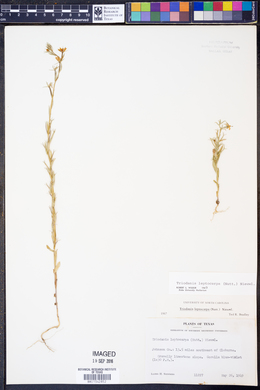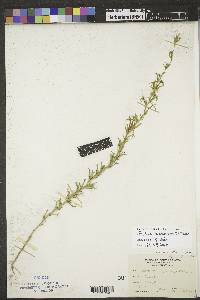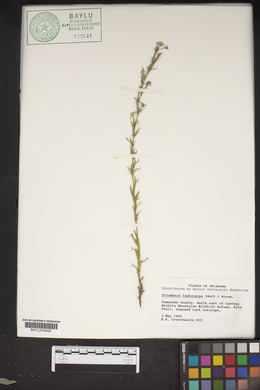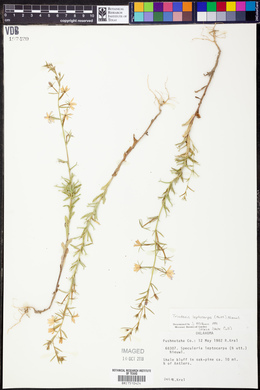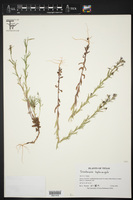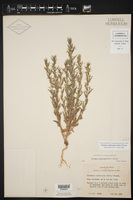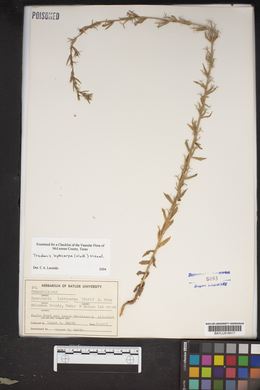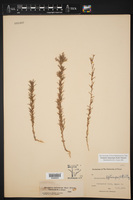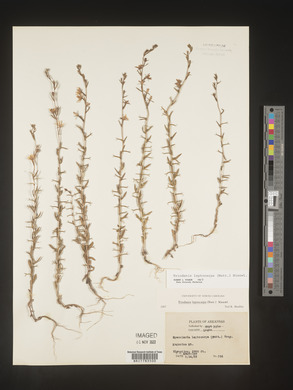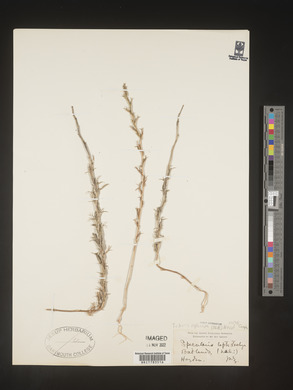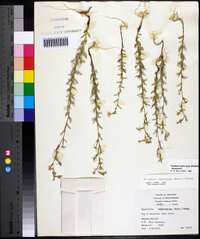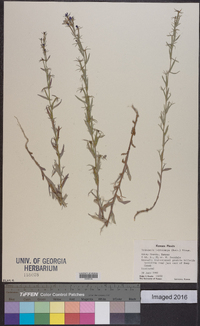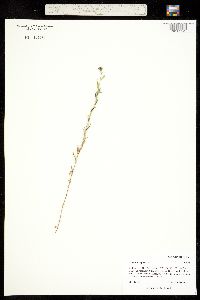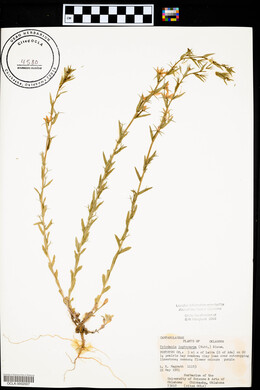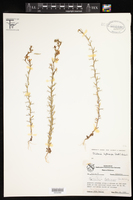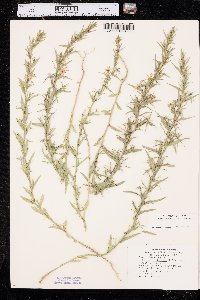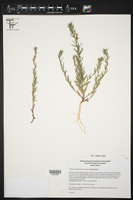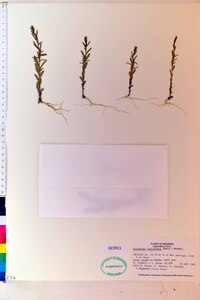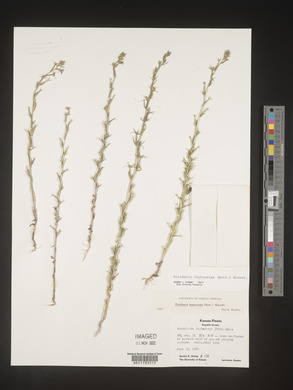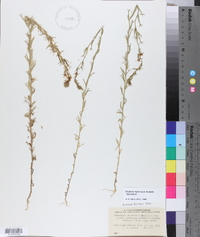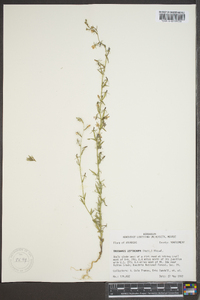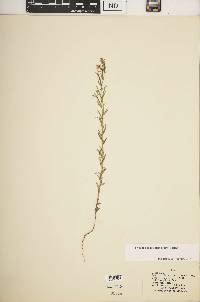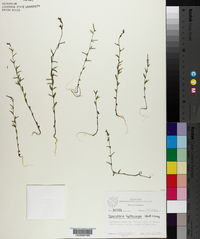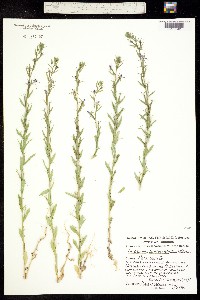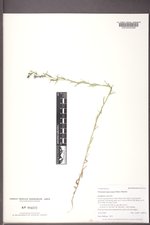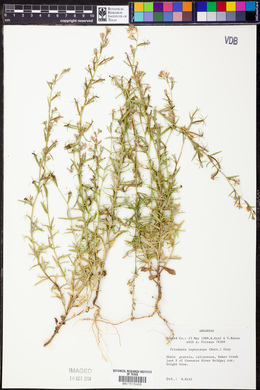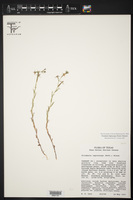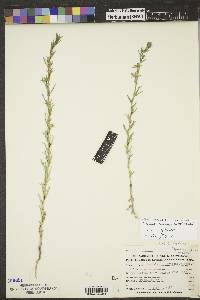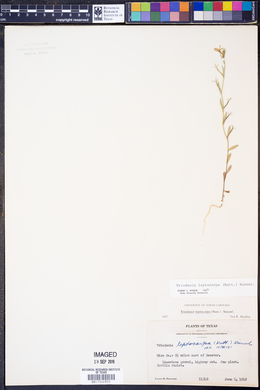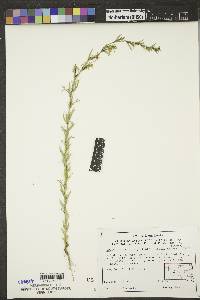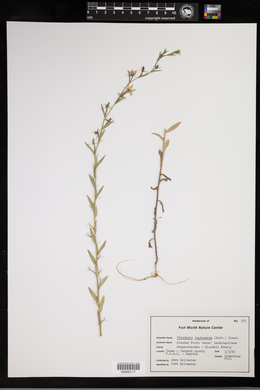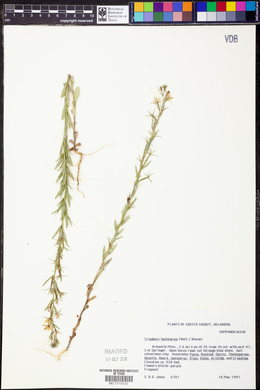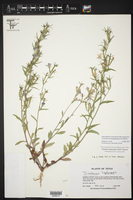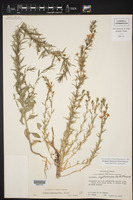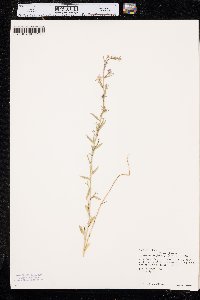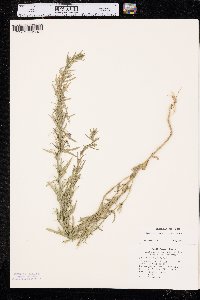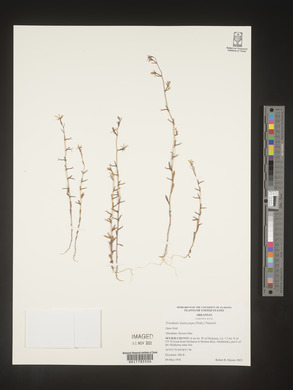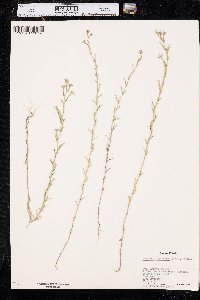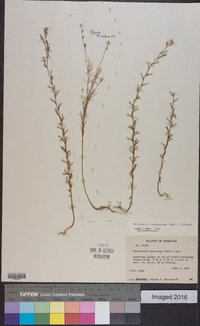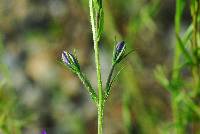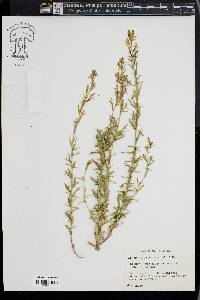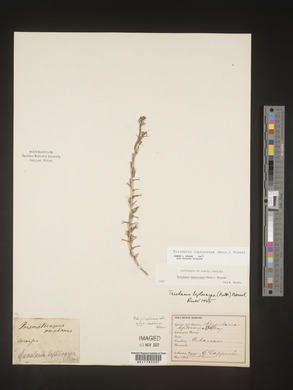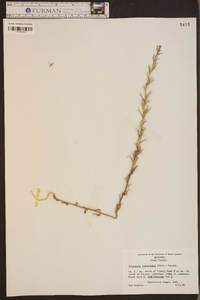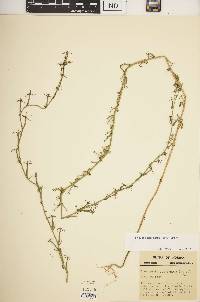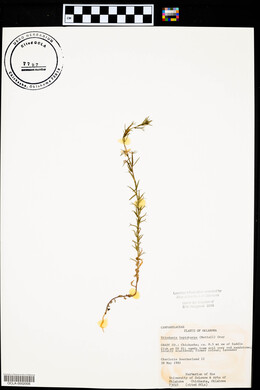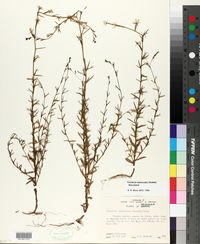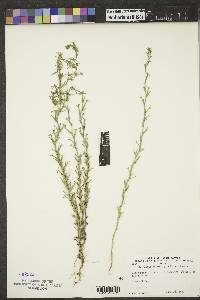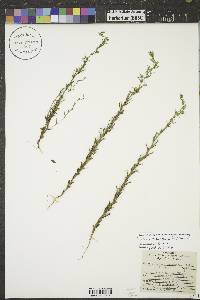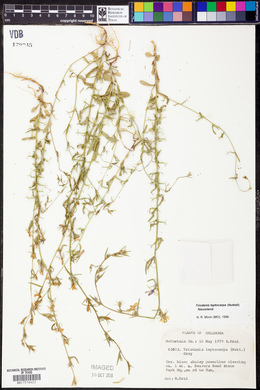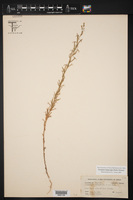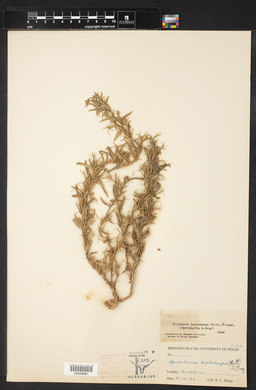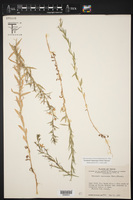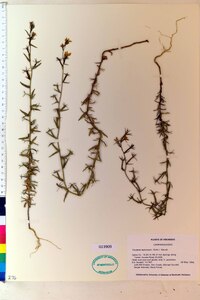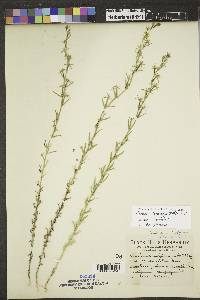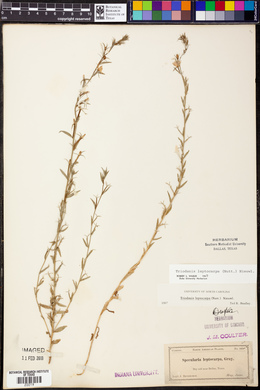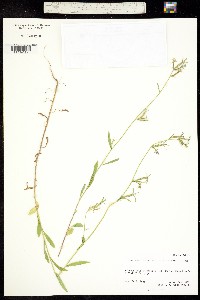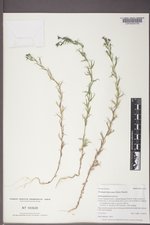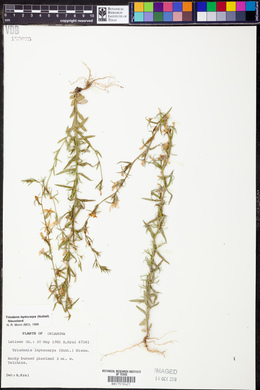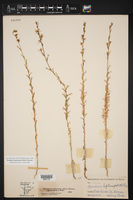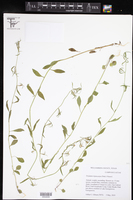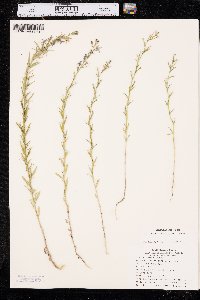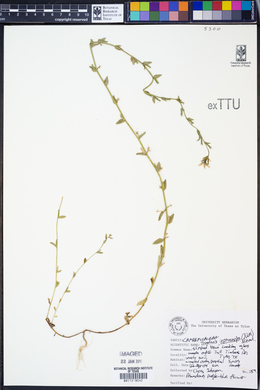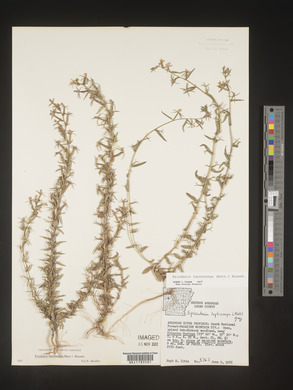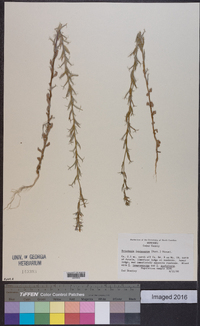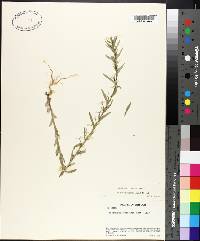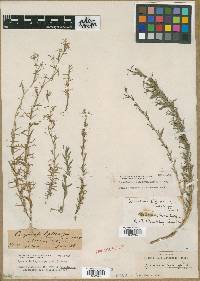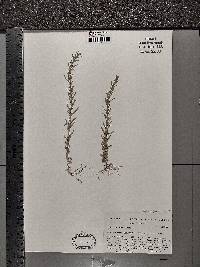
|
|
|
|
Family: Campanulaceae
Slim-Pod Venus'-Looking-Glass, more...slimpod Venus' looking-glass
[Campylocera leptocarpa, moreCampylocera leptocarpa var. glabella Nutt., Specularia linsecomia Buckley] |
Annual herb 0.1 - 0.8 m tall Stem: unbranched or basally branched, rough-hairy, or with short, spreading hairs at least near the base, but sometimes hairless. Leaves: alternate, stalkless (though lowest ones often on short stalks), 1.5 - 3.5 cm long, 2 - 7 mm wide, usually five to ten times longer than wide, tapering to the base, and with shallow wavy, or non-toothed edges. Flowers: stalkless, blue-violet, 0.7 - 1 cm long, radially symmetric with slightly flared petals, and sitting in the axils of leaves or linear bracts. There are two types of flowers: the lower, smaller ones do not open (cleistogamous), while the upper, larger ones open, and are showy by contrast. Sepals: five, but fused at very base just above ovary, then separating into very narrow, linear, 0.6 - 1.5 cm long, outward curved or reflexed lobes. Often in the lower, cleistogamous flowers, the sepal lobes are smaller and fewer in number. Petals: five, but fused at base into a very short (scarcely 2 mm long) tube, then separating into almost 1 cm long, slightly flared lobes (at least in upper flowers, reduced or absent in the lower, cleistogamous flowers). Stamens: five, with short (shorter than anthers), hairy-based filaments. Pistil: with a single, two- or three-chambered, inferior ovary; and a single style, which usually ends in a three-lobed stigma. Fruit: a linear capsule, which opens by three small pores or valves along the sides (above the middle). The fruits produced by the lower, cleistogamous flowers are only 0.8 - 2 cm long, single-chambered, and arch away from the stem axis. Fruits from the upper, expanded flowers are straight, erect, 1.5 - 2.5 cm long, and often two-chambered. Seeds: many, lustrous, tiny (about 1 mm long), lens-shaped, and smooth. Similar species: There is only one other species of Triodanis in our area, T. perfoliata, which has much wider and rounded leaves, purple flowers with shorter (and more erect) sepals, and somewhat shorter fruits (only up to 1 cm long). Flowering: May to June Habitat and ecology: Very isolated in the Chicago Region to weedy dry areas along railroads. Occurence in the Chicago region: non-native Notes: Triodanis leptocarpa is specifically localized in the Chicago Region alongside railroads, which appear to be entry points for this introduced species. This implies the species has not spread very much since its introduction to the area. Etymology: Triodanis is a derivation of the Greek word combination for "three teeth", possibly referring to the pores on the capsule. Leptocarpa comes from the Greek words leptos, meaning thin or slender, and karpos, meaning fruit, thus together meaning "slender fruit". Author: The Field Museum Simple or basally branched, 1-8 dm, often floriferous to near the base, scabrous or shortly spreading-hairy at least below; lvs sessile, lanceolate or oblanceolate to lance-elliptic, or the upper (floral) ones linear, inconspicuously crenate or subentire, mostly 1.5-3.5 cm נ2-7 mm and 5-10 times as long as wide, the lowest ones short-petiolate and a little broader; cal divided to the hypanthium, the narrow lobes 6-15 mm, or smaller in the cleistogamous fls; upper fls with blue-violet cor 7-10 mm, the tube scarcely 2 mm; fr linear, those of the cleistogamous fls 8-15 mm and unilocular, those of the open fls 15-25 mm and often bilocular; seeds 0.7-1.0 mm. Dry open places; s. Minn. to Mont., s. to Ark. and Tex.; adventive in Ind. May, June. (Specularia l.) Gleason, Henry A. & Cronquist, Arthur J. 1991. Manual of vascular plants of northeastern United States and adjacent Canada. lxxv + 910 pp. ©The New York Botanical Garden. All rights reserved. Used by permission. |

